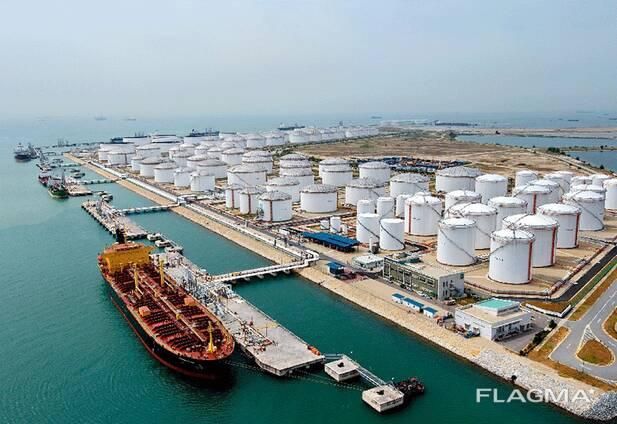Introduction – Thailand’s Seafood Market in Statistical Focus
Thailand isn’t just a tropical paradise—it’s also a heavyweight in the global seafood market. When you think of seafood exports, Thailand should be right up there on your radar. In 2021, Thailand was the world’s 8th largest exporter of processed seafood by volume, owning a 3.3% chunk of the global market. In terms of export value, it ranked 14th with a 3.0% share. That’s impressive for a country with stiff competition from places like India, Vietnam, and Ecuador.
Fast forward to 2024, and the numbers are still making waves. Thailand exported about 138,500 metric tons of chilled and frozen fish and over 656,000 metric tons of canned seafood, with tuna leading the charge. All of this tells us one thing: if you’re in the seafood business and not looking at Thailand, you’re missing out.
But here’s the catch—selecting the right supplier isn’t as easy as picking the biggest name. You need data. You need verified export performance. And that’s where platforms like Freshdi come in, offering critical market insights, supplier verification, and up-to-date RFQ trends to guide informed procurement decisions.
Deep Dive – Key Production, Export Statistics & Market Signals
Thailand’s seafood industry is a giant. In 2021 alone, it churned out over 1.3 million tonnes of processed seafood, resulting in sales worth about USD 61 billion. That’s not just a number—it’s a signal that this market is a powerhouse.
By 2024, Thailand exported nearly 200,000 tonnes of fish products. The stars of the show? Chilled and frozen fish, including fish livers and eggs, made up roughly 138,500 tonnes. But it’s not just about volume—value matters too. The export value of fish products in 2024 hit 16.5 billion Thai baht, a notable increase from the previous year.
When it comes to destinations, China and Japan are the top importers, with China receiving 34.1 thousand metric tons and Japan trailing close behind at 33.5 thousand. This reflects not just demand but trust in Thai seafood quality.
Freshdi’s RFQ data has shown growing interest in high-quality, sustainable seafood from Thailand, especially from buyers in Asia, Europe, and the Middle East. These trends mirror the export data, proving that buyer demand aligns with what Thailand is producing and exporting.
Top 9 Verified Seafood Suppliers in Thailand
Here’s the part you’ve been waiting for. We’ve compiled a list of top-performing seafood suppliers in Thailand based on export achievements, certifications, and positive feedback from Freshdi users. These are companies you can trust.
-
Chef Cares Project Co., Ltd.
Known for innovative seafood dishes like Spaghetti with Tom Yum Sauce, blending Thai flavors with international appeal. -
STARLINK TRADING THAILAND
Specializes in premium live mud crabs, a favorite among international seafood buyers. -
BURAPA PROSPER CO., LTD.
Offers innovative seafood premixes for food service and retail, especially popular for mussel pancake mixes. -
BRANDCRAFT MARKET EXPANSION SOLUTIONS COMPANY LIMITED
A market leader in seafood snacks—think crispy salmon skins with a health-conscious twist. -
TRIPLE ONE DISTRIBUTION COMPANY LIMITED
Focuses on premium dried seafood products, particularly crushed squid, ready for instant consumption. -
V.THAI FOOD PRODUCT CO., LTD.
Offers condiments that perfectly complement seafood dishes—especially their bestselling chili sauces. -
ASIA MART EXPORT CO., LTD.
Known worldwide for their seaweed snack line, particularly in seafood flavors. -
WERRWUNG TRADING THAILAND
Strong in sauces and dips segment—bringing authentic Thai taste to international markets. -
Huaplachongnonsea Company Limited
Another big player in seafood condiments, specializing in bold Thai flavors.
Dynamic Ranking Note: Supplier activity on platforms like Freshdi is constantly evolving. Monthly or quarterly rankings—such as “Top Exporter of the Month”—can give real-time insights into supplier performance and trends.
Market Navigation – Statistical Trends, Price Insights & Export Dynamics
Thailand’s seafood landscape is anything but static. In 2022, the country produced about 957,700 tonnes of processed seafood. Around 76.4% of this was exported. The rest served a growing domestic market, which has seen a 73% increase in shrimp consumption from 2016 to 2024.
Canned tuna continues to dominate exports, accounting for 53.6%, followed by chilled and frozen fish at 30%. The U.S., Japan, and CLMV countries (Cambodia, Laos, Myanmar, Vietnam) are the top buyers.
But it’s not all smooth sailing. Overfishing, rising costs, and stronger competition from nations like China and Ecuador are tightening margins. That’s why many buyers are now leaning on Freshdi’s data tools to track pricing, seasonal availability, and RFQ activity.
Seasonal Price Fluctuations
Let’s talk prices. They shift with the tides—literally. In 2022, the cost of white shrimp jumped 9.3% to THB 150.3/kg due to lower supply and high input costs. On the flip side, seabass prices dipped 2.9% thanks to a supply glut.
For smart buyers, this means timing matters. Purchasing during off-peak times or using historical data to predict price shifts can save serious money.
Trade Agreements & Efficiency Gains
In 2025, Thailand hit a logistics milestone by exporting 24 tonnes of frozen shrimp to China via the Laos-China railway—cutting delivery time by 14 days. That’s not just faster; it’s fresher.
Also, a new seafood agreement with China gives Thailand a green light for large-scale exports, especially white seabass, with an estimated annual impact of over 4.9 billion baht.
Domestic growth is also looking promising. With tourism bouncing back and urban consumers seeking premium seafood, domestic sales are projected to grow 4.0% to 5.0% annually.
Conclusion – Leveraging Data for Informed Procurement
Thailand’s seafood sector remains a global force, buoyed by robust production, strategic trade relationships, and a maturing domestic market. But navigating this industry isn’t just about knowing who sells what—it’s about knowing who sells best.
Whether you’re sourcing tuna, shrimp, or unique seafood sauces, supplier selection should be grounded in export data, certifications, and real-time performance. Luckily, Freshdi makes this easier than ever. With features like supplier verification, market analytics, and RFQ volume tracking, Freshdi empowers businesses to make smarter, data-backed decisions.
So, if you’re looking to dive into Thailand’s seafood market, start with the data. Then, let that data lead you to the suppliers who can deliver—not just quality, but consistency.
Key Takeaways
- Thailand is a top 10 global exporter of processed seafood, with canned tuna and frozen fish leading the charge.
- Export value is growing, but competition from low-cost producers is squeezing margins.
- Verified suppliers on platforms like Freshdi help buyers make informed procurement decisions.
- Seasonal pricing and freight efficiency (like the Laos-China rail route) are key factors in supply chain planning.
- Domestic demand is rising, which may affect future export availability.
Seafood Buyer’s Checklist
✅ Check supplier certifications and export history
✅ Monitor seasonal pricing for optimal purchasing windows
✅ Use RFQ trends on Freshdi to gauge supplier demand
✅ Prioritize suppliers with consistent Freshdi performance rankings
✅ Factor in logistics options (rail, sea, air) for time-sensitive products
Future Outlook
Thailand’s seafood export industry may face some headwinds, but it’s also riding some strong currents. With smarter logistics, expanding domestic consumption, and a continued focus on sustainability and human rights, the future looks promising.
Digital B2B platforms like Freshdi will be at the heart of this evolution—bridging the gap between data and decision-making, and helping businesses worldwide connect with Thailand’s top-tier seafood suppliers.
FAQs
1. What is the most exported seafood product from Thailand?
Canned tuna is Thailand’s top seafood export, making up over 50% of its processed seafood exports.
2. Why are Thai seafood prices rising?
Factors include overfishing, higher production costs, and seasonal supply fluctuations. Tracking historical data helps anticipate these trends.
3. How can Freshdi help seafood buyers?
Freshdi offers verified supplier profiles, market insights, RFQ trends, and export performance data to support informed buying decisions.
4. Are Thai seafood suppliers compliant with international standards?
Many top suppliers have certifications and follow best practices. Platforms like Freshdi help verify compliance.
5. Which countries import the most Thai seafood?
China, Japan, and the United States are the biggest importers of Thai seafood products.
References
- Krungsri Economic Outlook – Processed Seafood Industry
- Statista – Thailand Fish Product Export Data
- Aqua Asia Pacific – Shrimp Market Trends
- Reuters – CPF Lawsuit and Human Rights Developments
- Trade Council – Thailand-China Railway Export
- Pattaya Mail – Thai Seafood Export Agreement with China
- Bangkok Post – U.S. Export Compliance
- Freshdi B2B Seafood Platform





